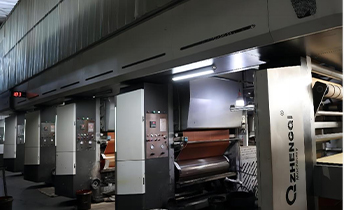- Home
- high quality duplex paper manufacturing process
Oct . 08, 2024 03:25 Back to list
high quality duplex paper manufacturing process
High-Quality Duplex Paper Manufacturing Process
Duplex paper, known for its superior quality and versatility, plays a crucial role in various applications such as packaging, printing, and decorative purposes. The manufacturing process of high-quality duplex paper involves several key stages, each essential to ensuring the final product meets industry standards and customer expectations.
The first step in the duplex paper manufacturing process is the selection of raw materials. High-quality duplex paper is primarily produced using recycled paper fibers and wood pulp. The choice of materials is critical, as it influences both the paper's physical properties and its environmental impact. Recycled fibers help reduce waste and promote sustainability, making them a preferred option for many manufacturers.
Once raw materials are sourced, the pulping process begins. This involves breaking down the cellulose fibers in the recycled paper and wood pulp to create a slurry. During this stage, the mixture is subjected to mechanical and chemical treatments to remove impurities and enhance fiber quality. The result is a pulp that is refined, clean, and ready for the next step in the manufacturing process.
After pulping, the slurry is blended to achieve the desired consistency and properties. Additives such as fillers, dyes, and sizing agents may be included at this stage to improve the paper's brightness, opacity, and water resistance. High-quality duplex paper usually features a smooth exterior layer and a slightly rougher interior layer, which are achieved through precise control of the blending process.
high quality duplex paper manufacturing process

The next step is the formation and dewatering of the paper. The pulp is fed onto a wire mesh conveyor, where it spreads out and forms a continuous sheet. Water is removed through a series of drainage systems and suction rollers, and the wet sheet is pressed to remove additional moisture. This stage is crucial for defining the paper's thickness and weight, which are key characteristics of duplex paper.
Once the sheet has been formed and excess water removed, it undergoes drying. The drying process typically involves large heated rollers that remove the remaining moisture while ensuring the paper retains its strength and flexibility. This stage must be carefully monitored, as over-drying can lead to brittleness, while under-drying may cause issues with adhesion in later stages.
With the paper dried, it is time for surface treatment. Coating and calendering are common processes to enhance the smoothness and finish of duplex paper. Coating improves printing compatibility and visual appeal, while calendering ensures uniform thickness and surface integrity. These treatments are vital for achieving the high-quality standards expected in duplex paper applications.
Finally, the finished duplex paper is rolled and cut to specified dimensions based on customer requirements. Quality control measures are implemented throughout the manufacturing process, including physical testing for strength, smoothness, and printability. This ensures that only top-notch products leave the facility.
In conclusion, the manufacturing process of high-quality duplex paper involves meticulous attention to detail at every stage, from raw material selection to final quality control. By prioritizing sustainability and leveraging advanced technologies, manufacturers can produce duplex paper that meets the demanding needs of various industries while contributing to environmental conservation. This commitment to quality and responsibility is what sets high-quality duplex paper apart in today's market.
Latest news
-
High-Quality Bathroom Cabinet Contact Paper – Durable & Stylish Leading Suppliers, Exporters, Manufacturers
NewsJul.08,2025
-
Premium Wood Contact Paper for Desk – Reliable Suppliers & Exporters
NewsJul.08,2025
-
Premium Contact Paper for Table Top – Durable & Stylish Surface Solution from Leading Manufacturer
NewsJul.07,2025
-
Duplex Board with Grey Back - Reliable Supplier & Competitive Price Manufacturer & Exporter
NewsJul.07,2025
-
Premium White Contact Paper on Cabinets – Trusted Exporters & Suppliers
NewsJul.06,2025
-
High-Quality Duplex Board Packaging for Food Reliable Manufacturer & Supplier
NewsJul.06,2025

